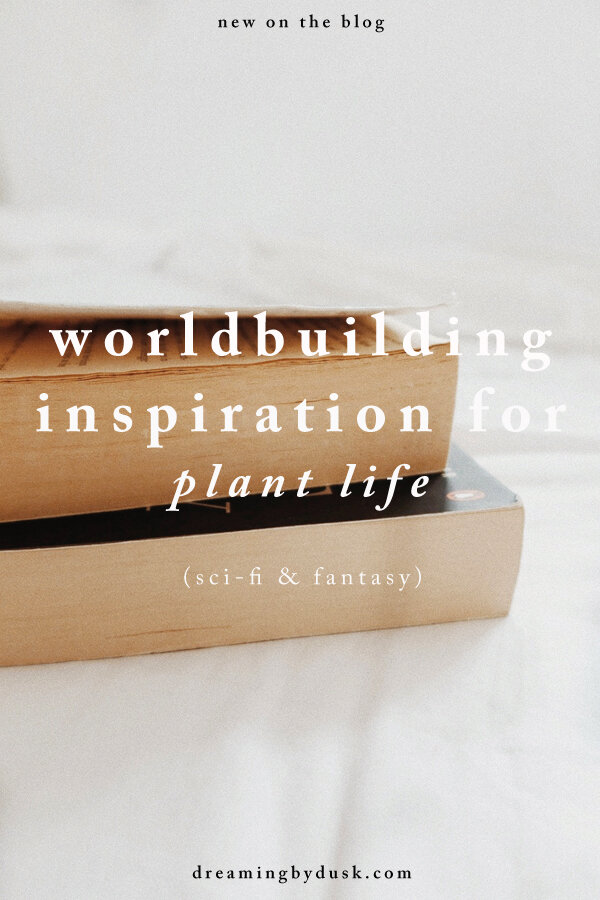Worldbuilding Inspiration: Plant Life
/One of the best, and sometimes most infuriating, parts about being a fantasy and science fiction writer is whether to write too much or too little about the fictional world. I never overlook the little things in my creative writing, the things the readers do not see, like plants, places, animals, and more.
It feels like giving up easily to rely on things that already exist in our real world. Hence, I make it my mission to craft parts of my fictional world from nothing, like a lot of my favourite authors. Consider the Mockingjay from “The Hunger Games” or the rare plant Jurda Parem in the “Grishaverse” or the existence of Daemons in “His Dark Materials”.
In the spirit of making fantasy worlds more believable, I’m sharing a few tips and ideas on how to create fictional plant life to match your fictional world. These are the methods I use for my writing, and I hope they’ll be helpful to yours as well.
Geographical location impacts what grows there.
Deserts, jungles, rainforests, woodlands, the arctic, mountains. All these places will have different environments, and that means different types of plants will grow there. Think about where your story takes place and jot down the types of flora that would grow there. This exercise is the same whether the setting of your writing is fictional/fantasy/sci-fi or set in the ‘real world’.
For inspiration, remember that cacti and succulents are present in deserts. Ferns, orchids, and even bamboo are familiar to jungles. In the arctic tundra, flora such as mosses and grasses are more prevalent. In forests, there will be an abundance of trees, shrubs, herbs, fruits, nuts, and mushrooms. In the ocean, you will also find kelp, algae, seagrass, and sargassum.
The role of plant life in culture and society.
We use various plants every day as nutritional food, for medicinal purposes, and for aesthetic display. There are also other uses for plants like cultural significance or scientific study or preservation. More than that, many trees, shrubs, and flowers are home and nutrition for animals such as birds, mammals, insects, and more.
There is also the role of trade. In the ‘real world’, crates of plants are transported from point A to point B across the world. Consider whether this kind of trade is present too in your fictional setting. Write down what plants are traded, and for what reasons.
It will suggest trade negotiations and deals between regions where A has an abundance of a plant in its environment, while B does not, and vice versa. Relating to this, it’s probably also best to brainstorm what plants are then harvested, foraged, farmed, and produced in higher quantities, for example, wheat.
Brainstorming ideas for plant names.
My favourite way to find names for flora is to compile lists of words. Nouns, adjectives, verbs. In English, Latin, and a range of other languages. You can use a dictionary, thesaurus, or even Google Translate. You can also begin by researching the names of plants that are present in the real world.
Also consider why plants in your fictional world have specific names, for example, the Nightlock berries in “The Hunger Games” books. They’re black, and they’re poisonous to the point of death, both of which can be associated with the colour black and the night sky. A similar style of naming plants exists in the real world as well, such as blueberries, star anise, and sunflowers.
A few unique ways to name the plant life in your story is to think about the plant’s colour, use, shape, or texture. You might even think of a fictional character who discovered the plant and then named it after themselves. It also helps to use word stems or suffixes (word endings) to name the plant life in your setting easier. For example, root, grass, thorn, flower, tree, moss, mushroom, bloom, blossom, and wood.
Do you need to know every plant in your fictional world?
No, you don’t. In the “Harry Potter” books, plants are only introduced into the story when they have relevance to the plot. Such as gillyweed or mandrake. The same can be said for Jurda Parem in the “Grishaverse” or the Nightlock berries in “The Hunger Games”. You can choose how much or how little you want to plan about the native wildlife of your fantasy world. Think about what is key to the story and write up the dictionary as you go.
These are some of the main tips, ideas, and methods that I use in my own creative writing to craft fictional plants. To recap, taking some time in your pre-writing to write these smaller details will help your fictional world to be more believable, and it will help to immerse readers in the story even more. I hope you find the methods I use to be useful for your own writing projects.
Happy writing!
Related Posts:
FOLLOW ME ELSEWHERE ON SOCIAL MEDIA








